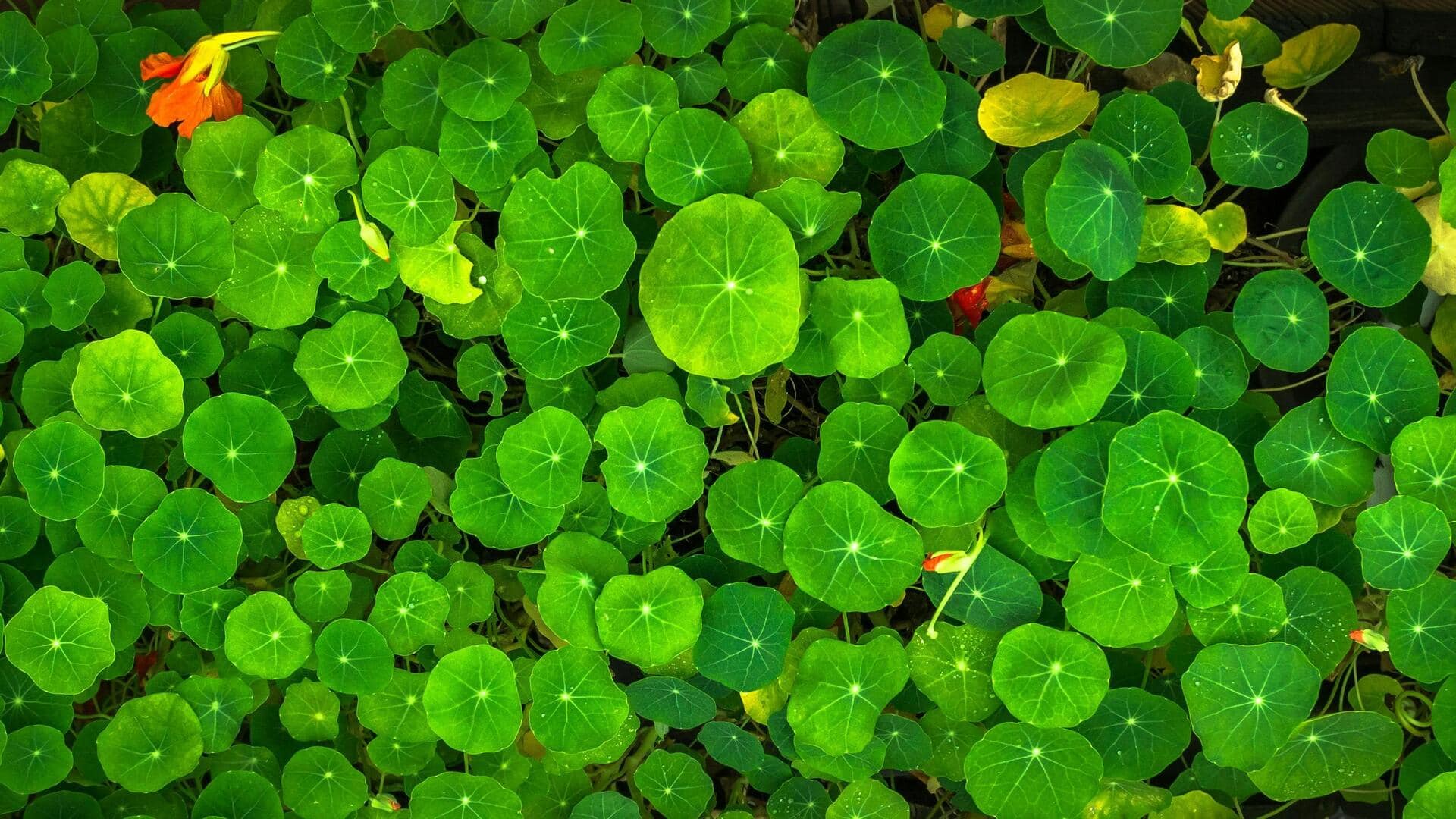
Why you should start eating nasturtium leaves today
What's the story
Nasturtium leaves, the vibrant green leaves of the nasturtium plant, are not just for garnishing your plate. These leaves are packed with nutrients and can be a great addition to your diet. With their peppery flavor, nasturtium leaves can be used in salads, sandwiches, and even pestos. Here's why you should add nasturtium leaves to your diet and how they can benefit your health.
#1
Nutritional benefits of nasturtium leaves
Nasturtium leaves are loaded with vitamins A and C, which are essential for boosting immunity and skin health. They also contain iron and manganese that help in maintaining healthy blood and bones. The presence of antioxidants in these leaves helps in fighting oxidative stress in the body. Adding nasturtium leaves to your diet can give you a natural source of these vital nutrients.
#2
Culinary uses for nasturtium leaves
The peppery taste of nasturtium leaves makes them an ideal addition to salads as a spicy alternative to lettuce or spinach. You can also use them as a garnish on soups or stews for an added kick. For those who love experimenting in the kitchen, blending nasturtium leaves into a pesto with nuts and olive oil gives a unique twist to traditional recipes.
#3
Growing nasturtium at home
Growing nasturtium at home is easy since they flourish in most climates with little care. They can be grown in gardens or pots on balconies, as long as they get enough sunlight. The plants also require well-drained soil and regular watering without over-saturating the roots. With home-grown nasturtiums, you can enjoy fresh leaves year-round.
#4
Potential health benefits beyond nutrition
Beyond their nutritional value, nasturtium leaves have been traditionally used for their medicinal properties. They are believed to have antibacterial and antifungal effects when consumed regularly as part of a balanced diet. Some studies suggest that compounds found in these leaves may aid digestion by promoting healthy gut bacteria growth.